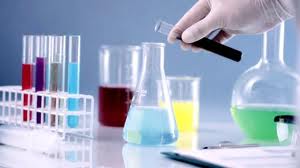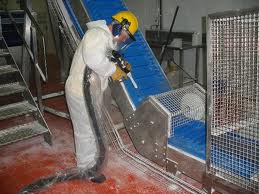One of the most important aspects involved in operating an industrial business is ensuring your company is aware of newly proposed regulations, guidelines, and procedures as it pertains to industrial cleaning solvents. Why is a consistently high level of awareness...
Ecolink News
Prevention of Chemical Water Pollution – Keeping our Water Safe
Many people enjoy planting vegetation, herbs, and other types of plants and greenery when the warmer seasons permit. In addition, people with lawns and a good bit of land must perform lawn care in order to keep their lawns looking nice. Unfortunately, and as any lawn...

Can Companies Reduce their Chemical Usage?
Chemical usage is such an integral aspect of the makeup of industrial processing; it makes it hard to answer this question in the affirmative. While it is agreed that with today’s advancements in modern technology there should be a way to drastically reduce chemical...

Is Water Pollution Still a Problem in the U.S.?
With so many eco friendly and green alternative activists, regulatory agencies, and watchdog groups and organizations all over the United States, it definitely has become harder for businesses and corporations who conduct unsafe and hazardous disposal methods to get...

Custom Blended Chemical Cleaners – Special Orders Don’t Upset Us
If your industrial business relies on chemical cleaners to clean and degrease your parts, metals, materials, and other industrial components, then it is possible you have been, or are in need of custom blended chemical solvents and cleaners. Many industrial products...

Get Safer Chemicals for Industrial Cleaning
In the previous decade, speculation grew that the chemicals industrial organizations were using for the industrial cleaning of parts, metals, and other materials might be harmful to the environment, and to people who were in contact with or in close proximity. As more...

How does the EPA Regulate the Industrial Cleaning Industry?
The EPA (Environmental Protection Agency) develops regulations, also known as or called MACT (Maximum Achievable Control Technology) standards, requiring industrial organizations and other entities involved in possibly emitting hazardous toxins into the environment to...
Commercial Cleaning Products Can Still be Eco Friendly
When people think of commercialized cleaning products, they tend to imagine mass produced cleaning solutions that are concocted with highly concentrated solvents that guarantee to clean a wide array of parts, metals and materials so industrial businesses do not have...
Industrial Green Cleaning Products for California
The state of California has created a reputation for being one of the most beautiful and cleanest states in the entire country due to its desire to follow as many eco friendly and green alternative guidelines regarding business policy. Most businesses in the state of...

Environmentally Safe Industrial Cleaners & Solvents
There is a lot of back and forth among scientists, researchers, and even politicians about the effect that some chemicals, and products have on the environment. Some people say that the earth is incredibly self-sustainable, and will be in fine shape for hundreds,...
Search here
Don’t forget to share this post!
Categories
- 3D Printing Chemicals
- Acetone Cleaners
- Acids
- Additive Manufacturing
- Aerosol
- Aerospace Cleaners
- AK225
- Alcohols
- Anti Foaming Agents
- AQMD
- Aqueous Cleaning Agents
- Bulk Chemicals
- CBD
- Chemical Suppliers
- Chemistry of Cleaning
- Citrus Degreasers
- Clean Air Products
- Commodity Chemicals
- Contec Wipes
- Corrosion Inhibitors
- Daraclean
- Degreasing Agents
- Deicers
- Denatured Alcohol Cleaners
- Disruption of Chemicals
- Drying Agents
- Ecolink News
- Electrical Contact Cleaning Solutions
- Ethyl Acetate
- Evaporation Rate
- Extraction
- Flux Removal
- food grade solvents
- Green Chemistry
- Humectants
- Industrial Degreasers
- industrial green cleaning products
- Industrial Hygienist
- Industrial Pollution
- Interns
- IPA
- Lacquer Thinner
- Low VOC
- Lubricants
- MACT Standards
- Medical
- MEK
- Metal Pretreatment Chemicals Manufacturers
- Methanol
- Methyl Acetate
- MIL-PRF-680
- Military Cleaners
- Millipore
- Mineral Spirits
- MSDS
- N-Propyl Bromide
- NMP Solvent
- Non Flammable
- Oil Extraction
- Organic Cleaning Solvent
- OSHA
- Our Team
- Oxygen Scavengers
- Paint Strippers
- Parts Washer
- PCB Cleaning
- Pollution Prevention
- Precision Cleaning
- Recycling
- Resin Removal
- Rust Removal
- Safer Chemicals
- scale and corrosion inhibitors
- Scholarship Contest
- Sodium Hypochlorite
- soft washing
- Solar Panel Cleaning
- Solvent Replacement Strategies
- Solvents
- Surfactants
- Surgical Cleaning
- Sustainable Chemicals Strategy
- TCE
- Tidal Washers Product Blogs
- Toxic Chemicals
- Vapor Degreasing
- VOC
- Volatile Organic Compounds
- Water Treatment Chemicals
- White Oils
- Wind Turbine Maintenance
- Worker Safety


